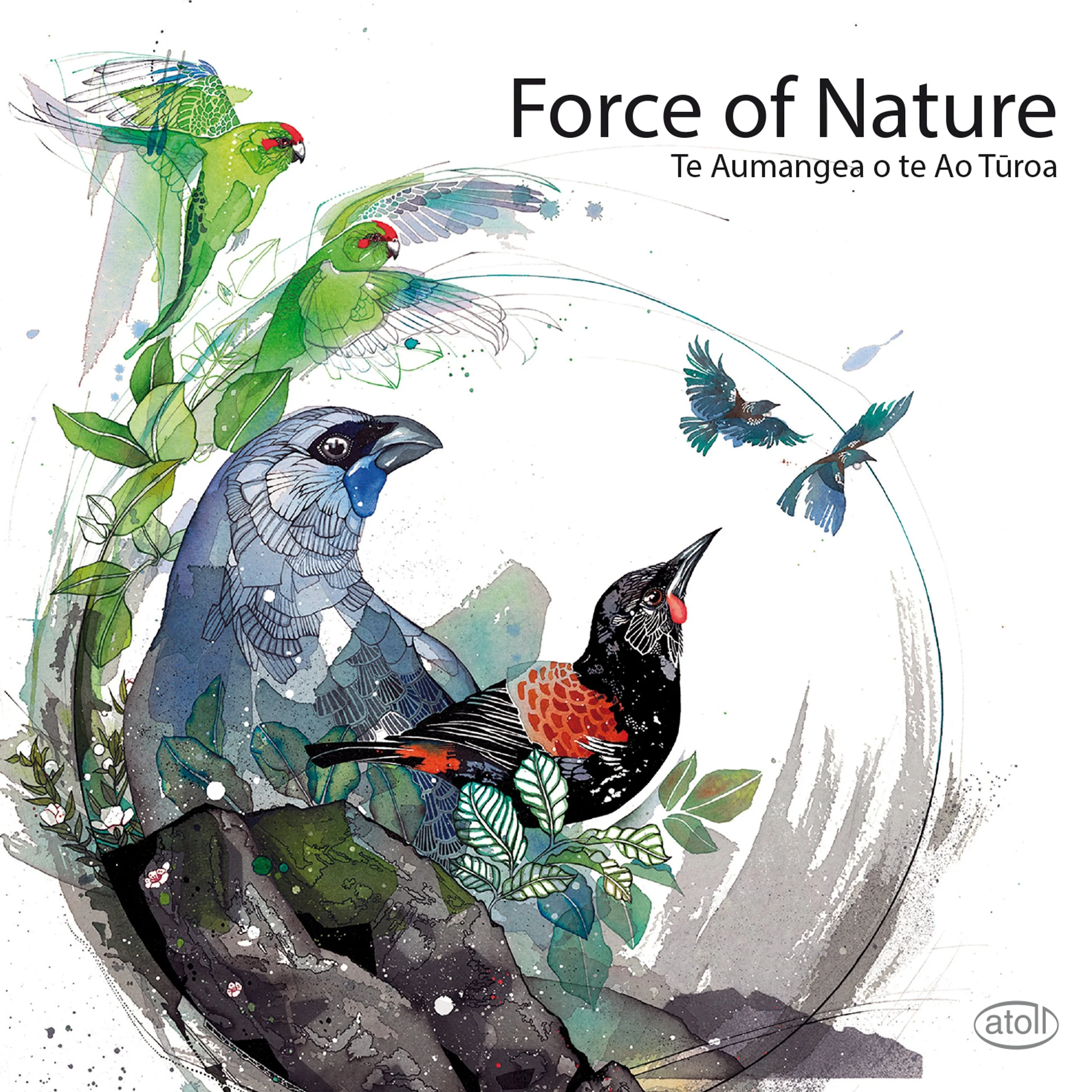Force of Nature: Forest & Bird’s clarion call
Composers of Aotearoa New Zealand have long found inspiration in our natural world and unique birdsong. To mark its 100th birthday, Forest and Bird invited a group of composers to create music highlighting conservation concerns. The enterprising project produced a live concert of nine new chamber pieces in the recent Auckland Arts Festival and this recently released album, Force of Nature.
All works have an exploratory quality, composers finding imaginative new sounds and performance approaches to tell their stories, bringing our wild places to vivid life.
Auckland composer Janet Jennings’ marvellous Urban Lives: Longfin Eels and Long-tailed Bats opens the album. She explores our noisy, speedy city lives with dramatic drum and piano, before the music plunges to underwater peace with the eels, using gently plucked strings and quiet piano ripplings. Then she takes us up into the air with the mercurial bats - tiny rapid melodies, high piano trills and piccolo.
NZTrio: (clockwise from left) Amalia Hall (violin), Ashley Brown (cello) Somi Kim (piano)
…integral to the Force of Nature project.
Albatross and whale cavort in Rob Thorne’s Te Toroa me te Tohorā, performed by NZ Trio with the composer’s taonga puoro woven through the texture. Kaitiaki, by emerging composer Alexander Alford, is an alto flute solo recorded in Ohio by New Zealander Alexa Still, paying tribute to Forest and Bird volunteers who work alongside the taniwha, traditional Māori guardians.
Different geographic regions are celebrated. Andrew Perkins’ lovely Ngā Manu o te Ngahere for flute, clarinet and cello is a chorus of conversation from the birds of the Dunedin forest. Patrick Shepherd travels from source to mouth of a South Island braided river in He Awa Whiria, from still sanctuary to rapid torrent, exploiting the virtuosity of the NZTrio.
Several works mourn environmental losses. A subtle, brooding lament for the critically endangered albatross, Salina Fisher’s Toroa combines violin and koauau toroa, from albatross bone, in a reverent evocation of bird and ocean sounds.
Clarinetist/composer Peter Scholes
…uses a stunning timbral array in Widowmaker (The Falling).
Whirling porotiti and rainstick are among clarinettist/composer Peter Scholes’ stunning timbral array in Widowmaker (The Falling), a fiercely assertive large ensemble piece lamenting habitat loss. Miriama Young’s Place of Echo also uses taonga puoro, blown, spun and tapped, alongside the Trio in a poignant conjuring of an imaginary forest where huia, kōkako and kākāpō sing to their mates.
The pūtorino has two voices, one flute-like, the other a resonant trumpet.
Rob Thorne uses both in a solo work telling the traditional love story of two moths.
The album ends with a haunting love story, Rob Thorne’s Te Manawa o Raukatauri for solo pūtorino. The instrument’s plaintive flute voice converses with its resonant trumpet sounds, representing moth lovers Hine Raukatauri and Tane Pēpepe. Magical – and uniquely of Aotearoa.
Force of Nature Te Aumangea o te Ao Tūroa NZ Trio with leading performers and composers celebrate 100 years of Forest and Bird (purchase from Atoll)
This album review was first published in NZ Listener issue 29 April, 2023




